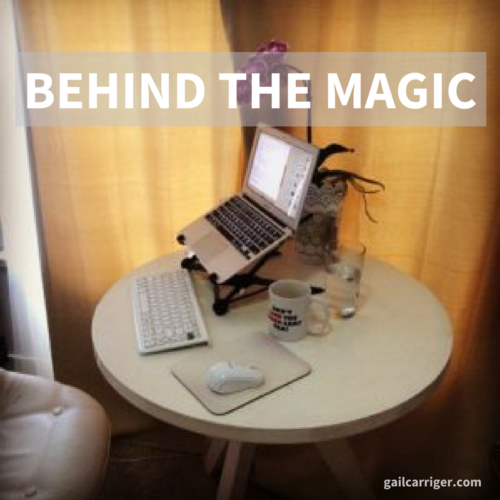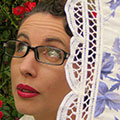Occasionally, Gentle Reader, I conduct on the ground research, or in some cases in the air.

One of the things I have been meaning to do for a long time is visit a shooting range. I grew up around riffles (farming community) but never used one, and I have an ex who (after living through the LA riots) owned a shot-gun so large I couldn’t really lift it. But I, personally, have never found the idea of guns very appealing. Which may be the consequence of my part British upbringing, or it could be all those hippies.
| 1851 |
However, guns do make the occasional appearance in my books and I have actually never shot one. I’d rather not get into the politics of guns, so I’ll merely say that they are historically present in my time period and my world-building, so I thought it best if I knew at least a little bit about them.
My dear friend J. Daniel Sawyer is an excellent marksman and volunteered to be my guide. He does, after all, have a book on the subject of guns for writers. So a week ago, we trekked to a nearby gun range so shoot some of their oldest guns.
I thought you might like a glance at my notes. Which were mainly things that surprised me . . .
- 22 manually load, manually eject casing (single action Bearcat revolver)
- 22 up close to temple could be an assassin’s weapon, but otherwise not all that effective
- Thumb (not trigger finger) gets tired from pulling back hammer
- Smaller gun doesn’t get that hot, just warm to the touch
- Smaller lighter gun of same caliber seem to have more recoil, with a bigger 22 (10 shot double action revolver) the heaviness of the gun seemed to almost shield the shooter
- Larger caliber gun was much louder but doesn’t effect how hard I had to pull the trigger
- Recoil hit tender part between finger and thumb
- Rough grip makes it easier to hold but harder on the skin, understand appeal of wooden handle, rubber later, and shooting gloves
The larger caliber proved too much for me. We had to jump from a .22 to a .45 (compact 1911) since the shooting range only had one .38 and that gun was challenging (they said). This was a little sad since Ethel, Alexia’s gun, is a derringer that would probably have been in the .38 range. But it did afford me the time to chat with some of the local enthusiasts while my friend finished the .45 rounds.
| 1851 |
Being a materials scientist by training I was fascinated to learn about the so-called Perchatta gun grip on the 1902 gun they had in a case. It seems some sort of rubber mixed with plastic. I’ve never heard of such a thing and couldn’t find it on the interwebs under that name (given me by a suspect individual) so if you know more on the actually scientific name of the material.*
| 1860-1868 |
There it is, my visit to the range. In many ways the range itself was exactly as I suspected, and some of the psychology of, for example, the instructional video was decidedly… off. But I am glad I went because I really feel like I learned something that will effect how I write about using guns in my books. Improving, shall we say, my precision if not accuracy.
* A note the name of the material appears to be Gutta Percha also know as Victorian vulcanite. You can read more about it in the comments bellow. In an unrelated matter, I was looking up Victorian Mourning Jewelry and found Gutta Percha was often used in place of jet.
Flanders says this of Gutta-percha:
“Gutta-percha was produced from the sap of the Isonandra gutta tree, native to Indonesia. When vulcanized, it acted as a waterproofing, insulating material, much as we sued rubber and now use plastic. It first appeared in Britian in the 1840s, becoming widelt used for, among other items, hot-water bottles, golf balls and the insulating cover for the first transatlantic telegraph cable.”
~ Judith Flanders The Victorian House (pg. 45)
Want more behind the scenes sneak peeks? Join the Chirrup
Quote of the Day:
“There is no such thing as a moral or an immoral book. Books are well written, or badly written.”
~ Oscar Wilde
Tags: ETIQUETTE & ESPIONAGE, Victorian Culture, Victorian Science
I'm wondering if this is the same thing as gutta-percha, which was used for the insides of golf balls (In 1848, the Rev. Dr. Robert Adams Paterson (sometimes spelled Patterson) invented the gutta-percha ball (or guttie, gutty).[3][4] The guttie was made from dried sap of the Malaysian sapodilla tree. The sap had a rubber-like feel and could be made round by heating and shaping it in a round mold. Because gutties were cheaper to produce, could be reformed if they became out-of-round or damaged, and their improved aerodynamic qualities, they soon became the preferred ball for use.[5] Accidentally, it was discovered that nicks in the guttie from normal use actually provided a ball with a more consistent ball flight than a guttie with a perfectly smooth surface. Thus, makers began intentionally making indentations into the surface of new balls using either a knife or hammer and chisel, giving the guttie a textured surface – courtesy of Wikipedia)
Graeme informs me that:
Gutta-percha is a name for a set of trees, mostly of the genus Palaquium, noted for their latex. The same term is used to refer to the rigid natural latex itself that is produced from the sap of these trees, particularly from the species Palaquium gutta.
Palaquium gutta
Heavy use of gutta-percha during the second half of the nineteenth century, particularly as insulation for underwater telegraph cables, led to unsustainable harvesting and a collapse of the supply.[1]
The word 'gutta-percha' comes from the plant's name in Malay, getah perca, which translates as "percha sap".